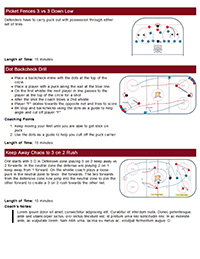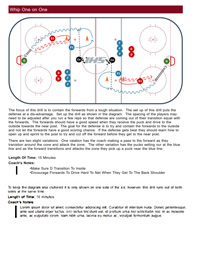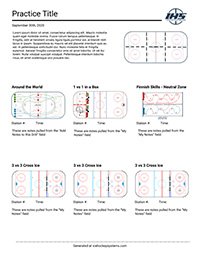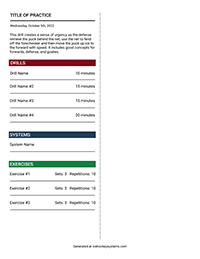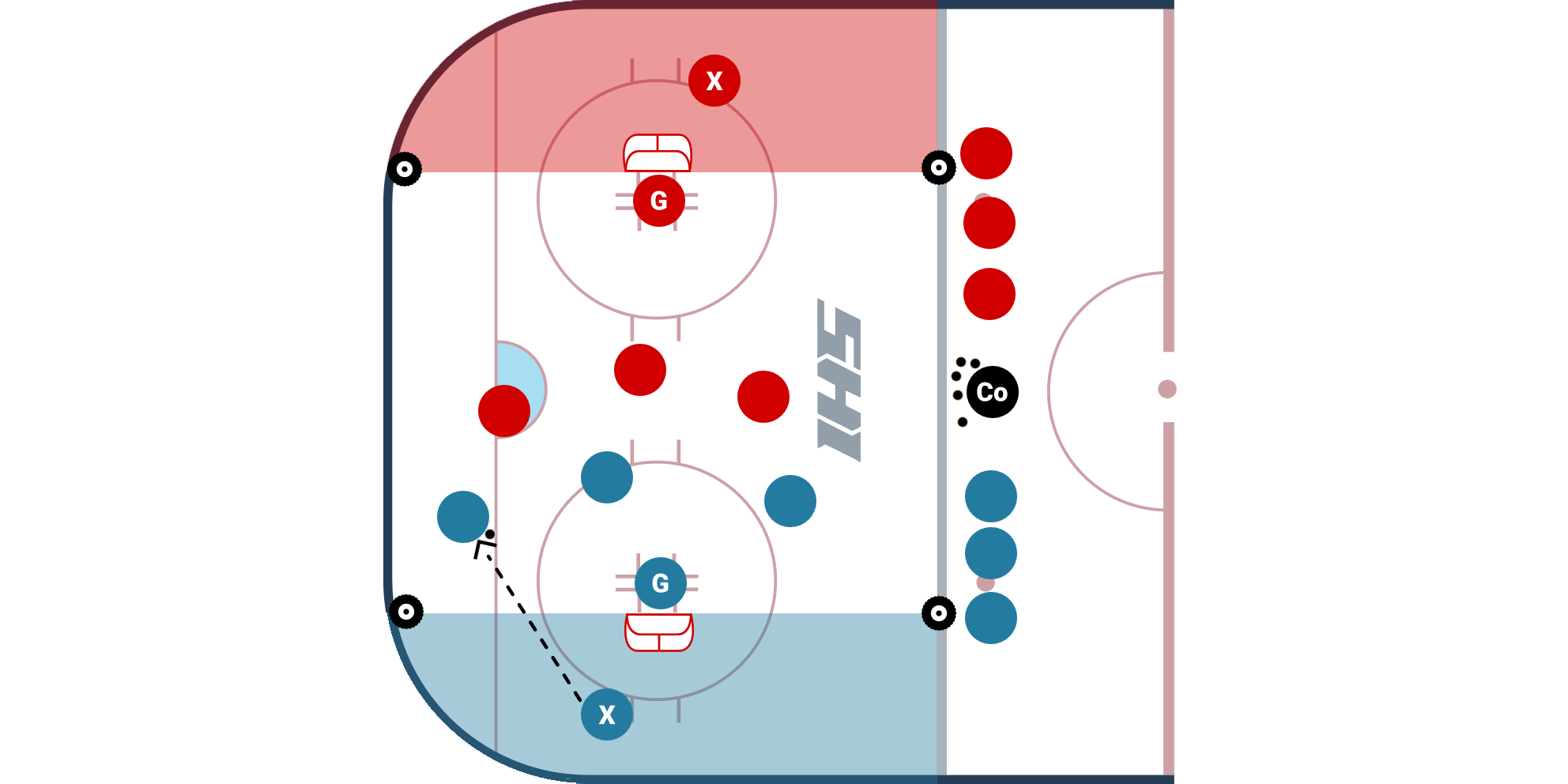
U10 - U12 Battle Day Practice
U10 - U12 Battle Day Practice
Please Note: This U10 - U12 Battle Practice Example is designed to be utilized across multiple age levels. With that being said, we encourage you to adjust the drills & games based on your team's age and skill levels. These drills and practices can be modified to become more basic or more advanced.
Practice Setup:
- Divide up teams evenly (2 color jerseys)
- Tally up the points scored in each game. The team with the most points at the end of a game is awarded 1 point.
- Depending on the amount of ice-time you have, you can play 3 to 5 games.
- Below we show examples of 7 games that can be used, with links to view 150+ other games. Choose games that will be best for your team.
Coaching Points:
- Have fun!
- Encourage teammates to communicate, and cheer for each other throughout the practice!
- Each drill and game will have different constraints that may work on different concepts & skills, let players know of the the concepts & skills they should focus on to be successful in each game.
- Coaches can view our 8 Hockey Habits webinar to get ideas on general habits that should be reinforced at every practice.
Battle Day Practice Overview
Triangle Tag
Triangle Tag is a simple and fun activity that helps players practice skating, edgework, puck control & on-ice awareness. This activity can be modified in a variety of ways depending on the age & skill level of your players.
Setup
- All players get their own puck
- Coaches (or players) are designated as "taggers" and do not have a stick. The more taggers, the more challenging it is for the players.
- On the whistle, the skaters try to navigate the ice and stay away from the taggers.
- If tagged, a player must stop and raise their hand and keep their stick on the ice.
- Other skaters can untag a player by stickhandling through their triangle.
- Players should keep track of how many people they untag!
- Activity should go for 45-60 seconds.
Variations
- Can be set up in different areas of the ice (half-ice, a zone, or a station)
- Can use players instead of coaches as the taggers.
- Can add more taggers to make it more challenging for the skaters.
- Can make the area of the ice smaller to make it more challenging for the skaters.
- Players can keep track of how many people they untag (player with the most untags wins the round!)
Coaching Points
- Head up! Look around to see where the taggers, other players, and open ice is.
- Use tight turns to get away from taggers.
- Try to untag as many players as possible!
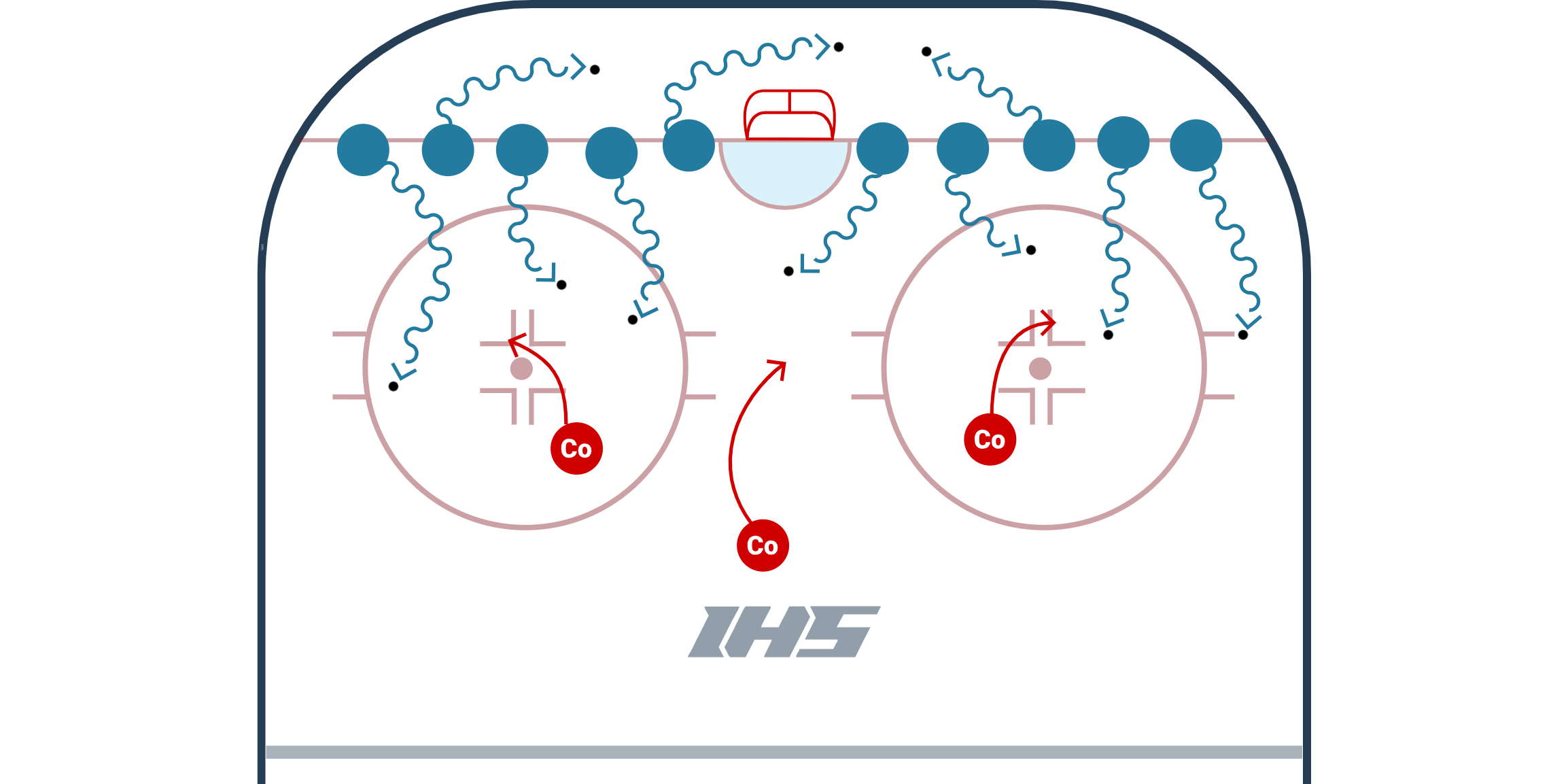
Use this as a warm-up, and as a game. Players can only unfreeze players on their own team. At the end of 45 - 60 seconds a coach blows a whistle, and the team with the least amount of frozen players earns a point.
Finders Keepers (Teams) - Passing and Puck Control Drill
This drill is great for working on awaness and puck support. It is a variation of the original "Finders Keepers" drill but now players are divided up into two teams. Players will need to communicate, protect the puck, support the puck, and pass in order to be successful.
Set Up
To set up the drill divide the players into 2 teams and use an odd number of pucks and less than half as many players. For example, if you have two teams of 7 players then use 7 pucks. If you have two teams of 6 players then use 5 pucks. You can play in one end from the blue line down, half-ice, or even full ice depending on the amount of players.
How to Play
Each team will start on the wall or on the end line. The coach will blow the whistle and shoot the pucks into play. The players will work in their teams to possess as many pucks as possible. The coach will decide on a length of time to play and then blow the whistle. On the whistle all the players must stop. The team that is in posession of the most pucks wins that round.
Players need to communicate and have good awareness. When they have the puck they need to be looking to make a pass to a teammate that will not have pressure when they recieve it. When they do not have the puck they can work with teammates to surround the puck or force passes into crowded areas.
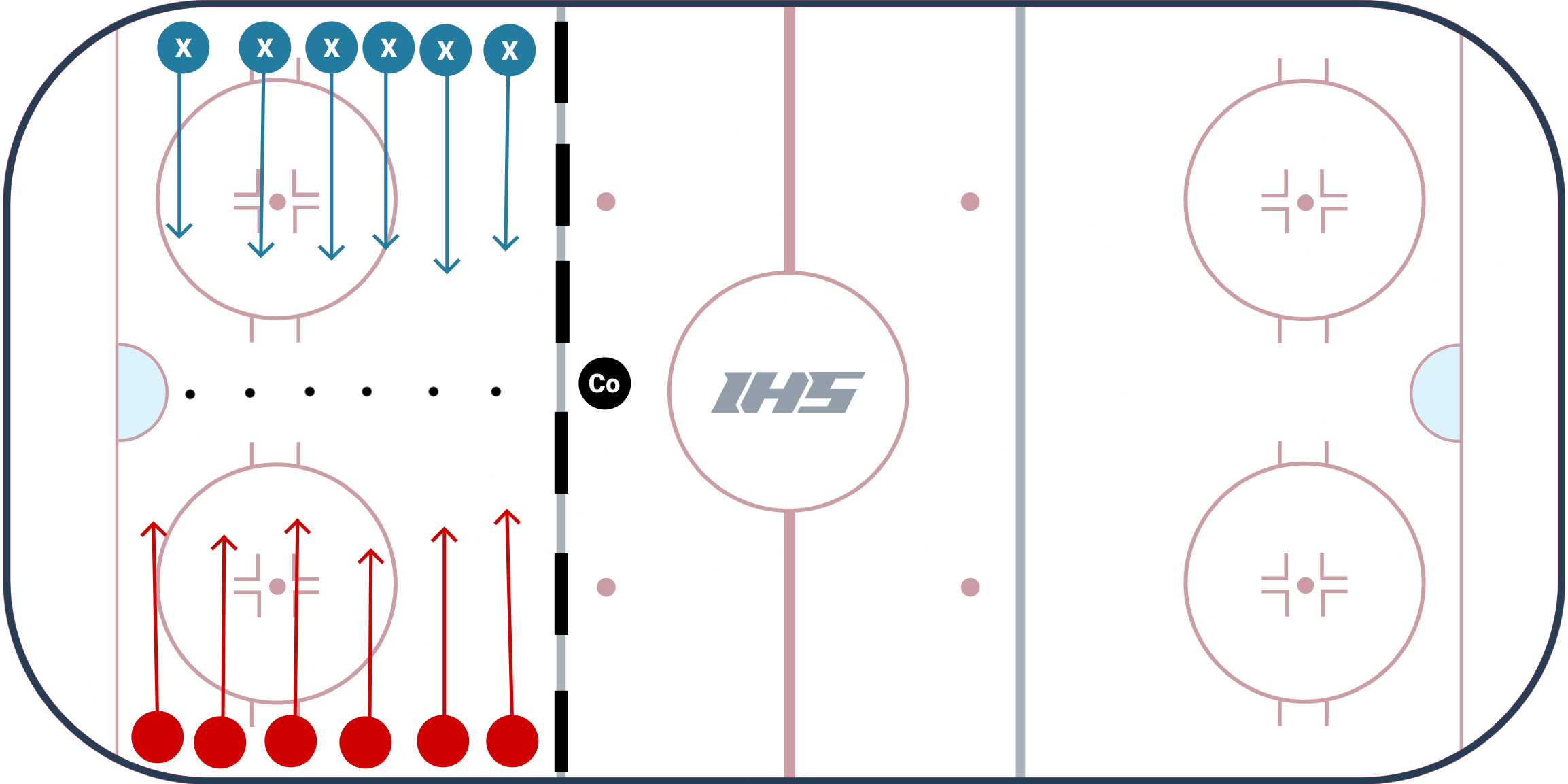
Gates of Buffalo Small Area Passing Game
The major concept of the Gates of Buffalo Small Area Hockey Game is to practice moving to open space, communicating verbally and non-verbally with teammates, so they can score Goals by passing through Gates.
This game framework will help players learn to play with their head up, communicate with teammates and move to open space.
As a coach, If you commit to working on activities like this instead of memorization drills for a portion of each practice, you will marvel at how your team begins to work together. It will look extremely messy at first, but players will get better with each repetition. Moving to open space, and moving the puck will eventually become second nature to the team.
GAME OBJECTIVE
- Score as many goals as possible by passing through the "Gates."
- You can not pass through the same gate twice in a row!
SETUP & ACTIVITY VARIABLES
- Players: great for 3, 4 or 5 players at a time.
- Time: You can rotate through groups of players in 30, 45 or 60 second shifts and count how many goals are scored.
- Or you can set a number of goals (let's use 5 for example) and stop the watch after 5 goals are completed.
- 5 players can be participating in the activity, while another 5 rest. Blow the whistle and the next 5 jump in. It gets fun when the teams compete against each other!
- Space: can be set up to be within a zone, or half of a zone (station) or a smaller area. The smaller the space, the more challenging it will be for the players as they are forced to make quicker decisions.
- Added Challenge: add obstacles within the space to challenge the players further.
- Tires, cones, sticks, defenceman, etc placed in the space will make it harder to pass and skate around. As time goes on the added obstacles will help improve their reaction & decision making.
- Group Competition: After the group gets comfortable with the exercises, you can add a natural element of competition between the groups by counting the number of successful goals made in the specified amount of time.
- Or you can time each group and see how fast they can complete 5 (or any other number) goals. You will marvel at how the natural element of competition between groups will make the game more intense, competitive and fun!
- With a Goalie: You can require the players to make 2 (or more) passes through a gate before they can shoot on net. After they shoot on net, they need to make the required number of passes through the gates again.
- Pucks: You can add in 2 or more pucks at a time to make players pay more attention to the game and their surroundings.
- Gates: You can add 3 or more gates. They can be made of tires, cones, pucks and other materials. Change up the sizes of the gates for an extra challenge. The smaller the gate, the more challenging the game is!
- 3 vs 3 Game: You can setup gates and make the game 3 v 3, 3 vs 2, or 3 vs 1 so there is another team working to prevent scoring on the gates. Adding additional players for the team to play against will give the game a whole new spin. View a video demo of the 3 vs 3 game setup.
Setup Suggestions for Elite Players
- Make the gates much smaller.
- You can add a hockey stick at the bottom of each gate so players must "sauce" through a gate and over the stick for the point.
- Add various obstacles on the ice such as sticks that players must be aware of and pass around or sauce over.
- For extra fun, add a defenceman. Or play 3 vs 2 or 3 vs 3.
- If you have a goalie, require 2 or more passes through the gates before players are allowed to take a shot on net.
COACHING POINTS
- Encourage players to always move to open space on the ice. Do not allow them to stand still and pass the puck back and forth.
- Encourage players to find "passing lanes" to allow good passes.
- This skill is extremely valuable for youth players to work on. Finding passing lanes when you have the puck and jumping to open space when you don't have the puck so your teammate can pass to you is extremely beneficial during games.
- Encourage verbal communication (calling teammate by name, saying you are open, etc).
- Encourage non-verbal communication (good eye contact, showing a passing target, tapping a stick, etc).
- Allow players to make mistakes. It will take time to get comfortable with these activities. But as time goes on you will see them picking their head up to make a decision, which is the goal of this small area game.
Why do we call this small area game "Gates of Buffalo?" The game has been called "gates" in the world of soccer and we decided to add Buffalo to it for two fun reasons: First, IHS has strong ties to Buffalo, NY. Secondly, the imagery of a Buffalo can help drive home to your youth players why you are practicing this game. If you do not pick your head up and use your teammates while playing the game of hockey, you run the risk of getting trampled by the other team. This can feel like getting run over by a Buffalo (physically or on the scoreboard). This game helps prevent both of those situations by forcing players to keep their head up while communicating and working with teammates to score goals.
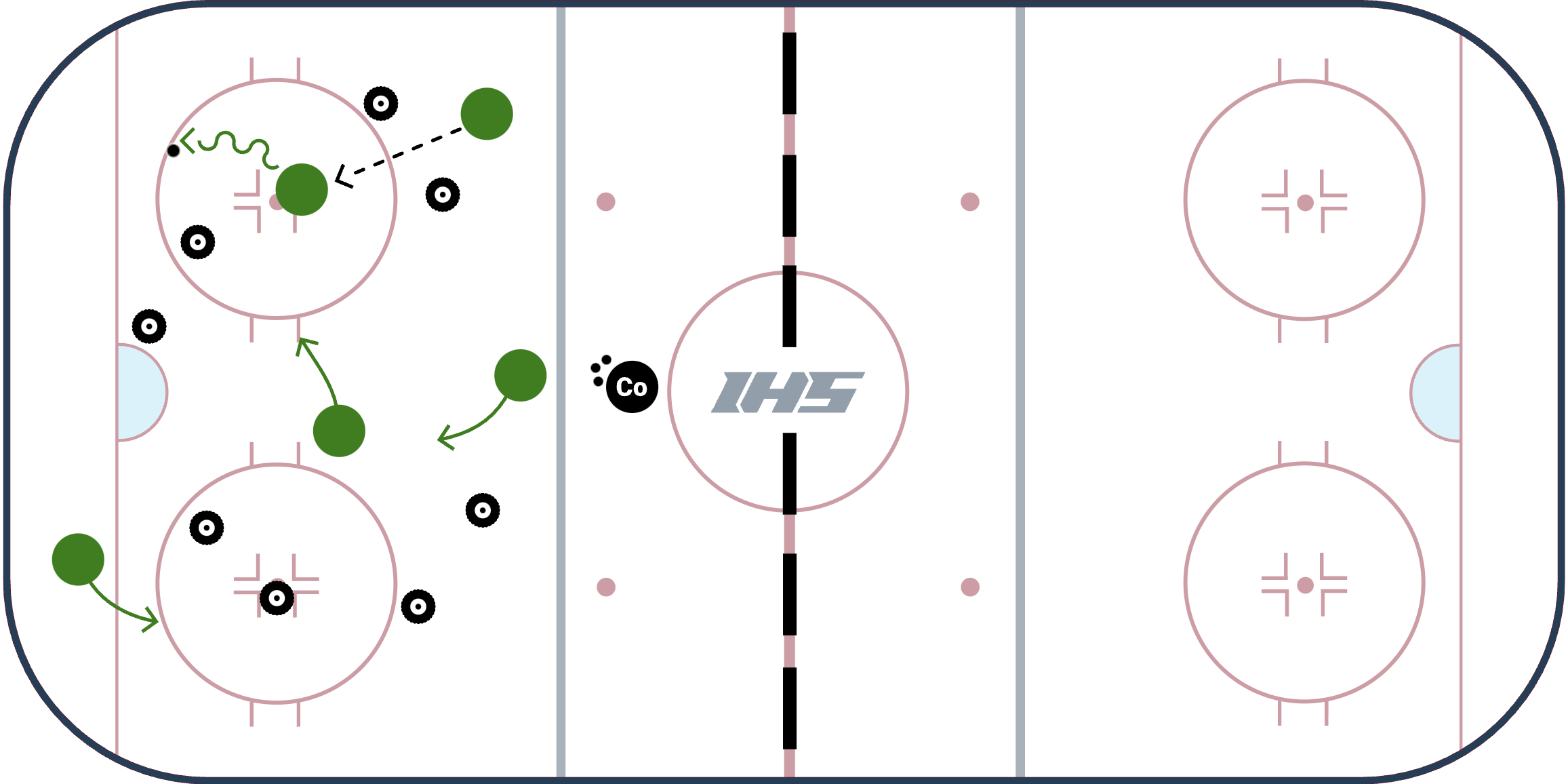
Tic Tac Toe Relay
Tic Tac Toe Relay
Split up players into two teams. Have 4 of the players place their sticks down, in the shape of a Tic Tac Toe board. The rest of the players can place their sticks off to the side.
Set up a small "obstacle" course based on the skill you're working on (i.e. balance, edges, tight turns, etc.). On the whistle, one player from each team starts with their team object (e.g. puck, tennis ball, cone, etc) in their glove.
On the whistle, players take off through the obstacle course and place their team object on the Tic Tac Toe board. After placing their object, players race back to their line to tag the next player who then takes off, completes the skating route, and then places their object down. Teams continue to race and play a game of Tic Tac Toe until one team has won.
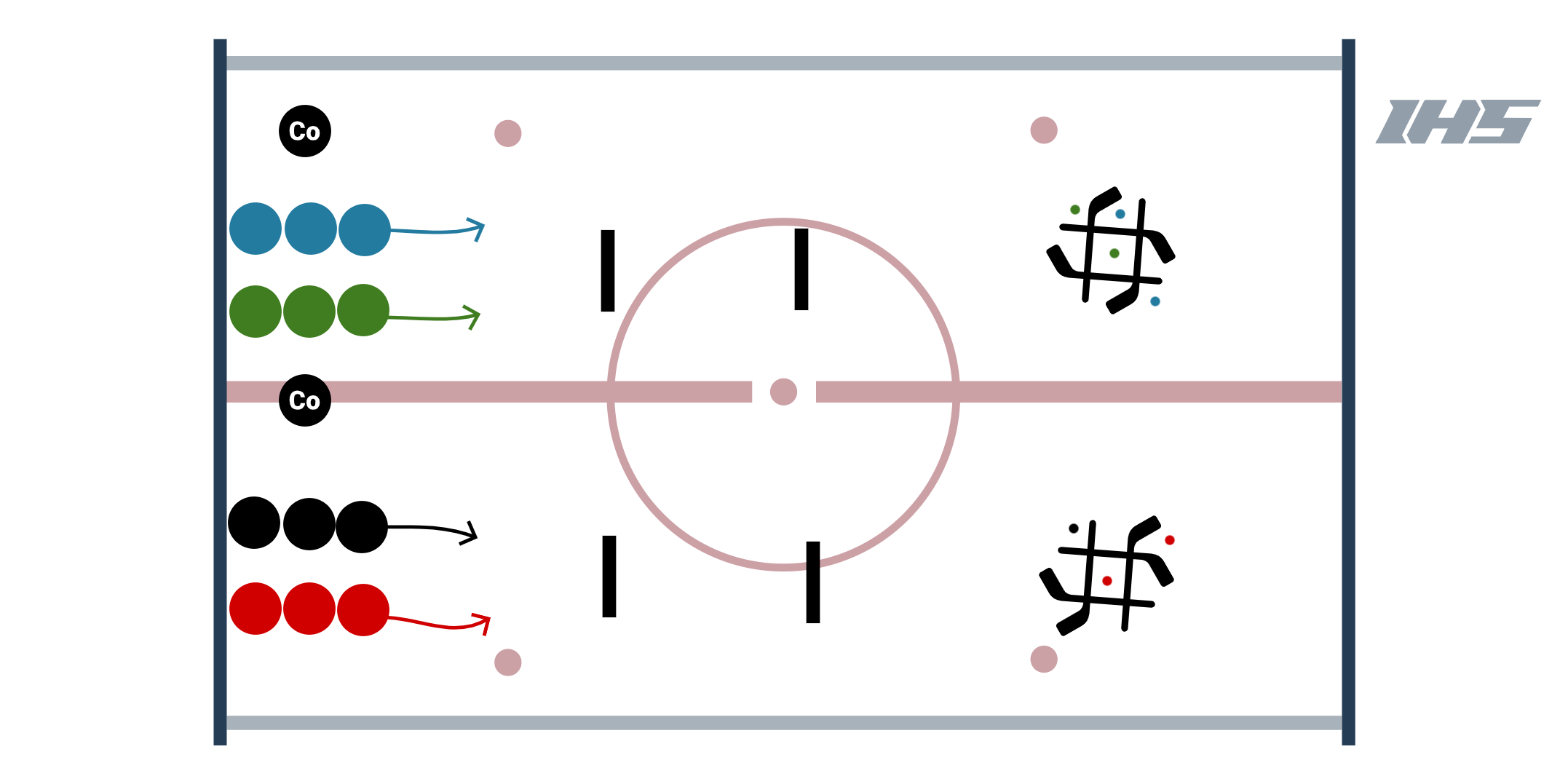
Bourque 3 on 3 Game
The Bourque 3 on 3 cross ice game is similar to the Gretzky Game but now the designated passers behind the nets are referred to as "Bourque." The "Bourque" is behind their own goal line and helps to initiate breakout passes to their teammates. It is important that players regroup to support their "Bourque."
Game Rules
- Players must use their "Bourque" on a change of possession before making an attempt to score.
- Players may attack the other team's "Bourque" but they may not shadow them.
- Players that are playing in the 3 on 3 can go behind their own goal line to help out their own "Bourque".
- There is no limit to how often a team uses their "Bourque."
- Shifts should be 30 - 40 seconds to keep a good pace and high intensity.
- If a puck goes out of play, the coach can dump in a new one.
Coaching Points
- Have the "Bourque" work on a good first pass.
- Use "false Information / deception" (fakes & looking off the pass) to get their players open.
- Players need to skate back to support their "Bourque."
- Fill three lanes and skate to open ice.
Variations:
- Can be 3 on 3 or 2 on 2.
- Can have 2 Bourque's to allow for D to D passes before the breakout starts.
Related Content:
Five Puck Scoring Race - Half Ice
The five puck race can be done with a half-ice sheet. Instead of the players lined up on the bench, they will be lined up on the red line. Place the two nets on the goal line inline with the dots and the five pucks spaced out on the blue line (as shown). The same rules apply to the half-ice setup as the full ice setup. If a player scores they have to skate back to the blue line before the next player can go. If they do not score they have to retrieve the puck and place it back on the blue line before the next player can go. This is a fun game the kids will absolutely love.
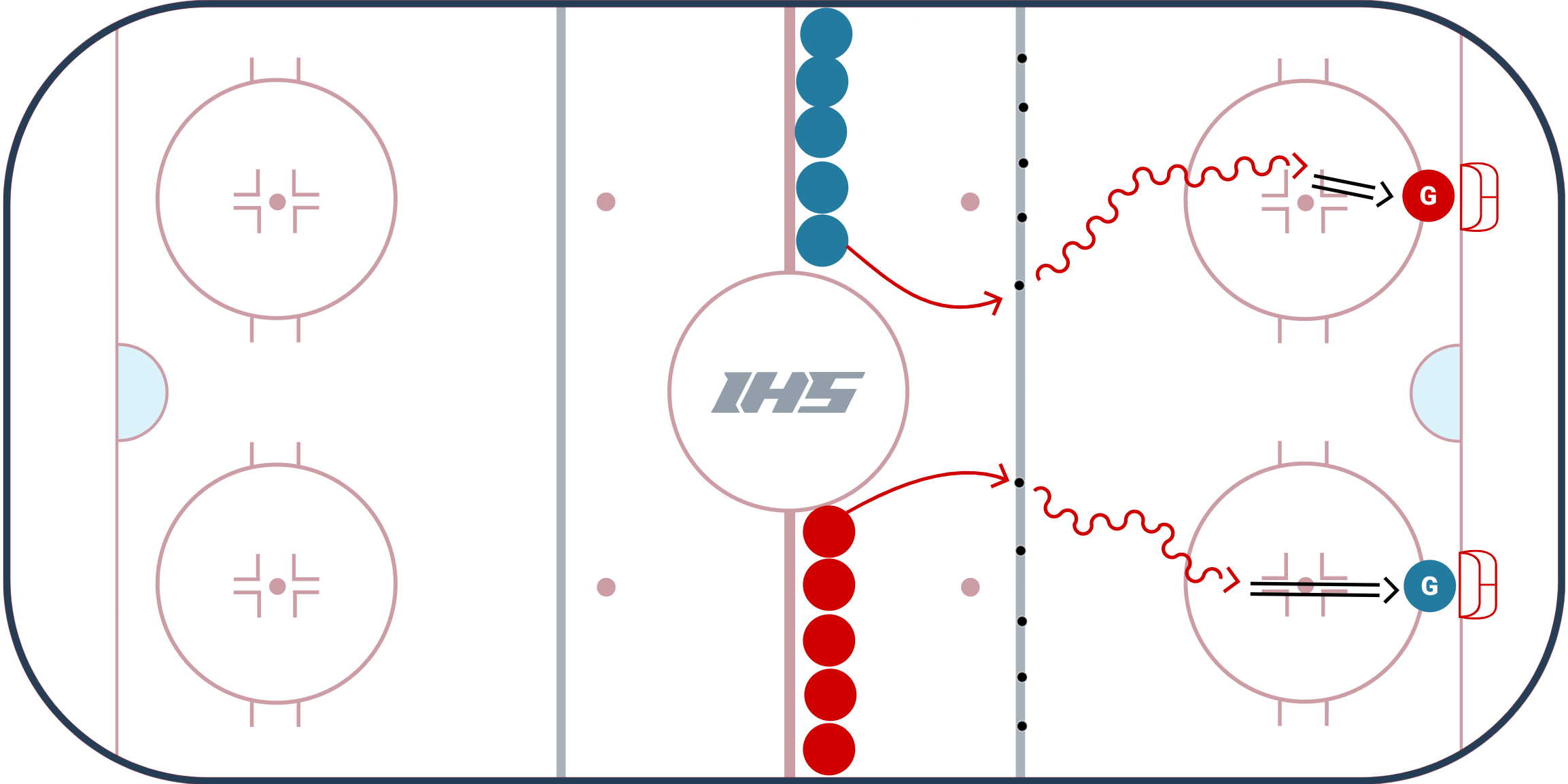
3 v 3 Cross-Ice Scrimmage
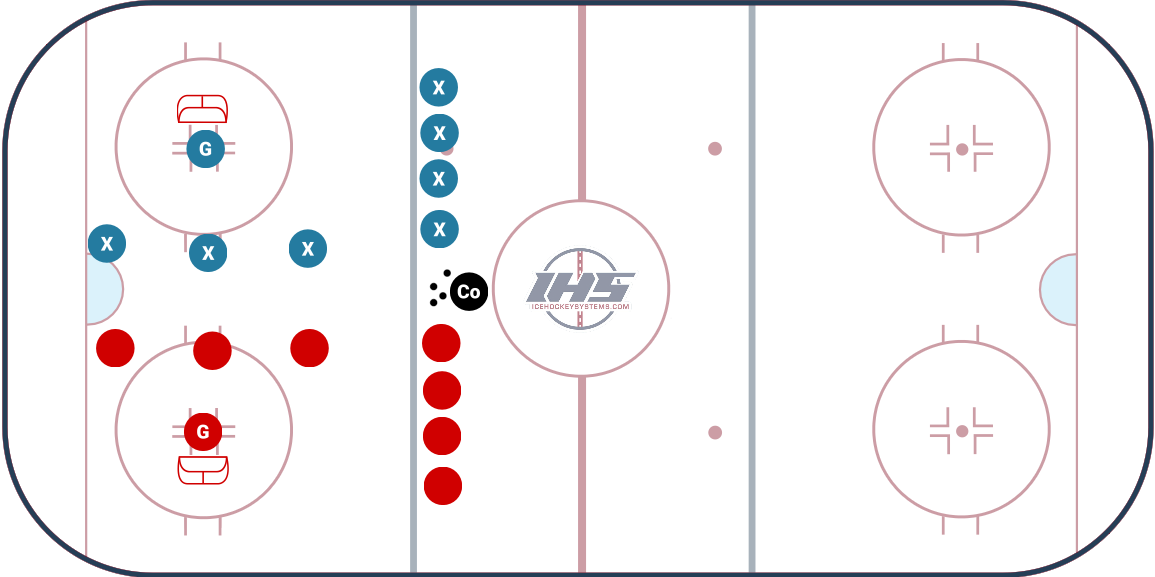
Finish Battle Day with a 3 v 3 Cross-Ice Scrimmage. Encourage players on the blue line to keep the puck in the zone and to cheer for their teammates.
Coaches can award 2 points for specific skills the team is working on. For example - 2 points for a goal that is scored on a one timer. 1 point for a normal goal.
Create Your Own Battle Day
Below we have links of resources you can use to create your own Battle Day.
